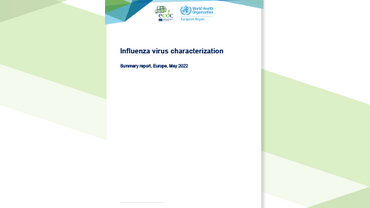Influenza virus characterisation, Summary Europe, June 2015
Over the course of the 2014–15 influenza season influenza A(H3N2), A(H1N1)pdm09 and type B viruses have co-circulated in EU/EEA countries. To date, 23 EU/EEA countries have shared 878 influenza-positive specimens with the WHO Collaborating Centre in London for detailed characterisation.
Executive Summary
Since the May 2015 report, 73 viruses have been characterised antigenically and 53 genetically. The 16 A(H1N1)pdm09 viruses characterised antigenically were similar to the vaccine virus A/California/07/2009; all 11 characterised genetically had HA genes belonging to genetic subgroup 6B, as observed worldwide.
All 31 A(H3N2) viruses characterised by haemagglutination inhibition (HI) assay were poorly recognised by the reference antiserum raised against the A/Texas/50/2012 vaccine virus but relatively well recognised by antisera raised against some cell-propagated genetic subgroup 3C.3a viruses. The 318 (24 since the May 2015 report) viruses, with collection dates after 31 August 2014, characterised genetically this season fell in genetic group/subgroups 3C.3 (39), 3C.3b (66), 3C.3a (39) and 3C.2a (174). Viruses in genetic group 3C.3, excluding those in subgroup 3C.3a, were antigenically similar to reference viruses closely related to A/Texas/50/2012, while those in subgroups 3C.3a and 3C.2a were antigenically distinct.
The five B/Victoria-lineage viruses were antigenically similar to B/Brisbane/60/2008, and the four for which HA sequencing has been completed all fell in genetic clade 1A. All 21 B/Yamagata-lineage test viruses characterised antigenically showed good reactivity with antisera raised against B/Phuket/3073/2013 (the clade 3 virus recommended for the southern hemisphere 2015 and northern hemisphere 2015–16 vaccines). Antisera raised against B/Massachusetts/02/2012 (the clade 2 virus recommended for the 2014–15 northern hemisphere season vaccine) did not recognise test viruses as well as antisera raised against B/Phuket/3073/2013. The 14 viruses characterised genetically all fell in clade 3, represented by B/Phuket/3073/2013.





